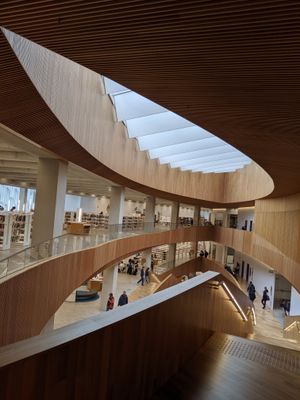
The Powerhouse Museum in Sydney has been doing very interesting work on their collection ‘catalogue’. Some of this work is described by Sebastian Chan [blog] at the recent Museums and the Web 2007 conference in San Francisco in a paper well worth reading.
Internally called OPAC2.0, the new catalogue put more than 70% of the Museum’s collection on-line. In order to operate effectively, OPAC2.0 collects detailed information about search terms and object relationships as well as tagging and controlled vocabulary usage patterns. With these and other evaluation tools built in to the structure of the site from day one, OPAC2.0 has been conceptualised as an ongoing project requiring continual enhancements and usability modifications.
This paper examines the OPAC2.0 project and its impact on the Museum. It presents initial usage patterns, search trends, and social tagging trends over the first 6 months of operation (from June 14 to December 31, 2006). In particular, the paper explores the impacts of opening up and the driving of traffic down the ‘long tail’ of the Museum’s collection; tag structures submitted by users using the folksonomy engine; and the internal Museum changes that have come about as a result of unprecedented user access and, importantly, user input and engagement.
[Archives & Museum Informatics: Museums and the Web 2007: Papers: Chan, Tagging and Searching]
He talks about three key ways in which the catalogue enhances serendipity:
- object and subject taxonomies
- augmented serendipity – user keywords or ‘tags’
- frictionless serendipity – user tracking.
[Archives & Museum Informatics: Museums and the Web 2007: Papers: Chan, Tagging and Searching]
The first involves the familiar use of ‘expert’ assigned terms. The second involves the collection and use of keywords assigned by users of the system. The third is especially interesting:
‘Frictionless serendipity’ is provided by user tracking; the aggregate behaviour of visitors to the site is used to make further recommendations based on actual behaviour. This is described as ‘frictionless’ because the visitor/user need do nothing other than navigate the site to lay trails of ‘intentional data’ for recommendations to occur. Aggregating this intentional data allows for search term recommendations, building dynamic relationships between terms, that reveal both aggregated synonyms and free associations. Thus a searcher for ‘minton’ currently gets suggestions for other searches of ‘mintons’ , ‘bone china’ , ‘british’ , ‘porcelain’ and ‘peacock’ , based on the terms other searchers of the term ‘minton’ have used and the objects they have viewed. [Archives & Museum Informatics: Museums and the Web 2007: Papers: Chan, Tagging and Searching]
The paper provides some fascinating data about search, browse and tagging behaviors.
Together the approaches he describes provide multiple paths through the collection and he concludes by suggesting that they work best together.
The Powerhouse Museum’s OPAC2.0 project demonstrates the importance of museums making their collections accessible through major search engines. It also demonstrates the possibilities for audience research and improved navigation of collections through the detailed recording and analysis of user traffic and behaviour data beyond traditional logfile data. User tagging and folksonomies can be used to improve navigation and discoverability but work most effectively when matched with detailed collection records and balanced with the structural benefits of formal taxonomies. When combined with these features, search tracking can provide a means to improve serendipitous discovery and enhance the ability of users to find related objects and explore deeper into a collection. [Archives & Museum Informatics: Museums and the Web 2007: Papers: Chan, Tagging and Searching]
It is great seeing how an interesting system was put together; it is even better being able to see this together with data about use.
Aside: I was pleased to ‘virtually’ attend a presentation of some of this material recently when Seb visited RLG Programs colleagues in Mountain View.



